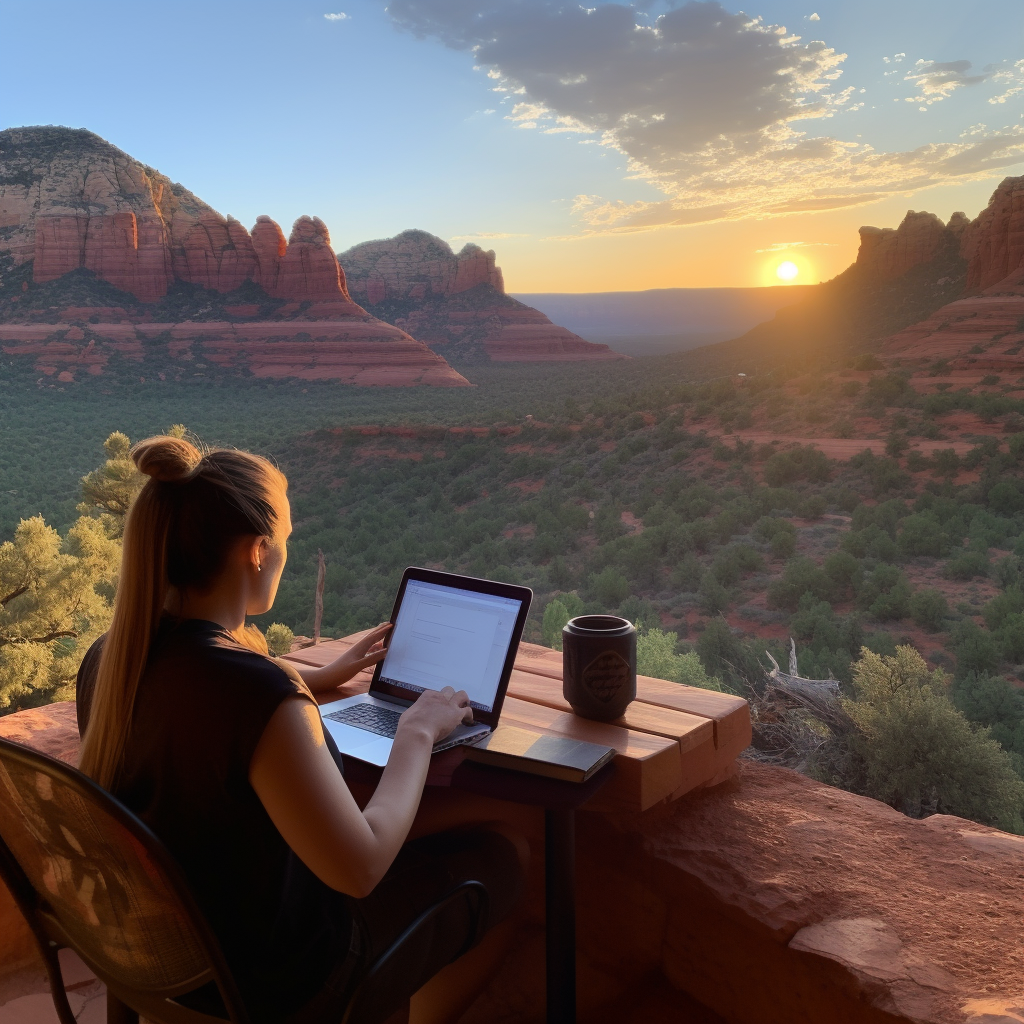In the shadow of Sedona’s picturesque red rock formations, a new kind of workforce is emerging, taking advantage of the city’s unique landscape and serene atmosphere. As remote work and the gig economy continue to reshape traditional work structures, Sedona has become a hub for professionals seeking a balance between their careers and the rejuvenating power of nature.
The shift to remote work, accelerated by the COVID-19 pandemic, has allowed many individuals to choose their ideal living environment, no longer confined by proximity to their workplace. Sedona’s exceptional beauty, coupled with its vibrant arts scene and access to nature, has attracted remote workers looking for a more tranquil and inspiring setting.
Carmen Martinez, a software engineer who moved to Sedona from Silicon Valley last year, exemplifies this trend. “The transition to remote work opened up an opportunity to live in a place where I can recharge and connect with nature,” she said. “After a long day of work, I can take a hike, meditate near a vortex, or just admire the stunning views right outside my door.”
The city has embraced the influx of remote workers and digital nomads, with ample high-speed internet access, and a community that supports personal and professional growth. One such coworking space, Glass House CoLab, offers not only a functional work environment but also hosts networking events, jazz nights, skill-sharing workshops, and opportunities to connect with other professionals.
Sedona’s local economy, heavily reliant on tourism, has also benefited from the growth of the gig economy. Independent contractors, freelancers, and part-time workers can capitalize on seasonal tourism to provide services such as guided tours, wellness experiences, and transportation endeavors.
Jeffrey Thompson, a local artist and gig worker, has found success selling his paintings and offering personalized art classes to tourists. “The gig economy has given me the flexibility to pursue my passion for painting while still earning a living,” he explained. “When there are more tourists in town, I can focus on teaching workshops and selling my artwork. During quieter times, I can devote more time to creating new pieces and exploring different techniques.”
Despite the advantages, Sedona’s evolving workforce also faces challenges, particularly related to affordable housing and infrastructure. The demand for housing, driven the booming tourism industries insatiable appetite for short-term rentals, has caused property prices to rise, making it harder for locals and newcomers to find reasonably priced homes.
Furthermore, the growing population places additional stress on Sedona’s limited infrastructure. The city’s traffic congestion, which was a concern even before the rise of remote work, continues to worsen. However, local authorities are working to address these issues through sustainable development and traffic management initiatives.
As the world embraces the flexibility of remote work and the gig economy, Sedona’s evolving workforce has the opportunity to redefine the city’s identity while preserving its natural wonders. By tackling housing and infrastructure challenges and fostering a supportive professional community, Sedona can emerge as a model for the harmonious coexistence of work and nature.
In the words of Carmen Martinez, “Sedona is a place where we can live and work while being constantly inspired and nurtured by our surroundings. It’s a rare opportunity to redefine what work-life balance means in the context of this magical landscape.”

